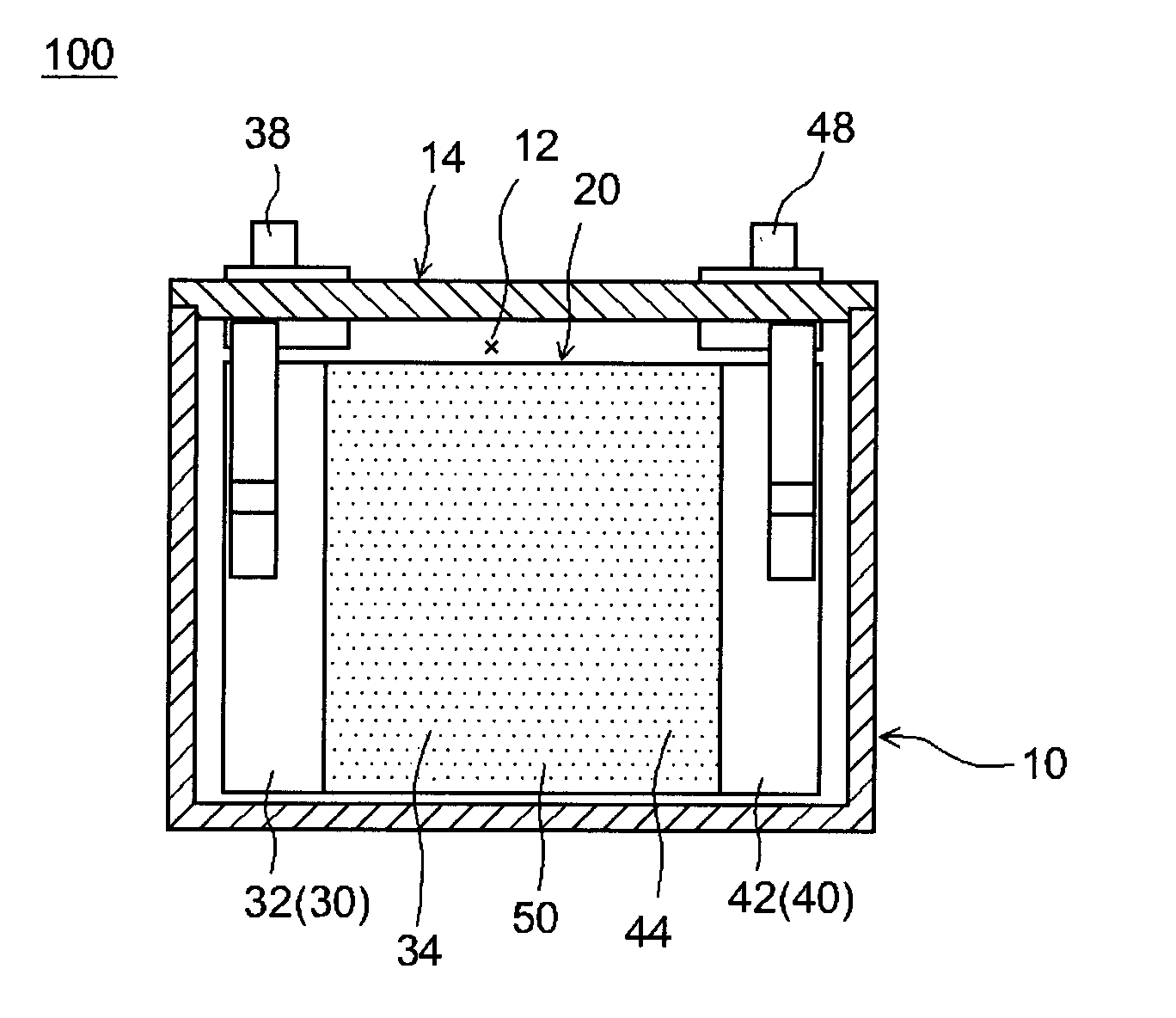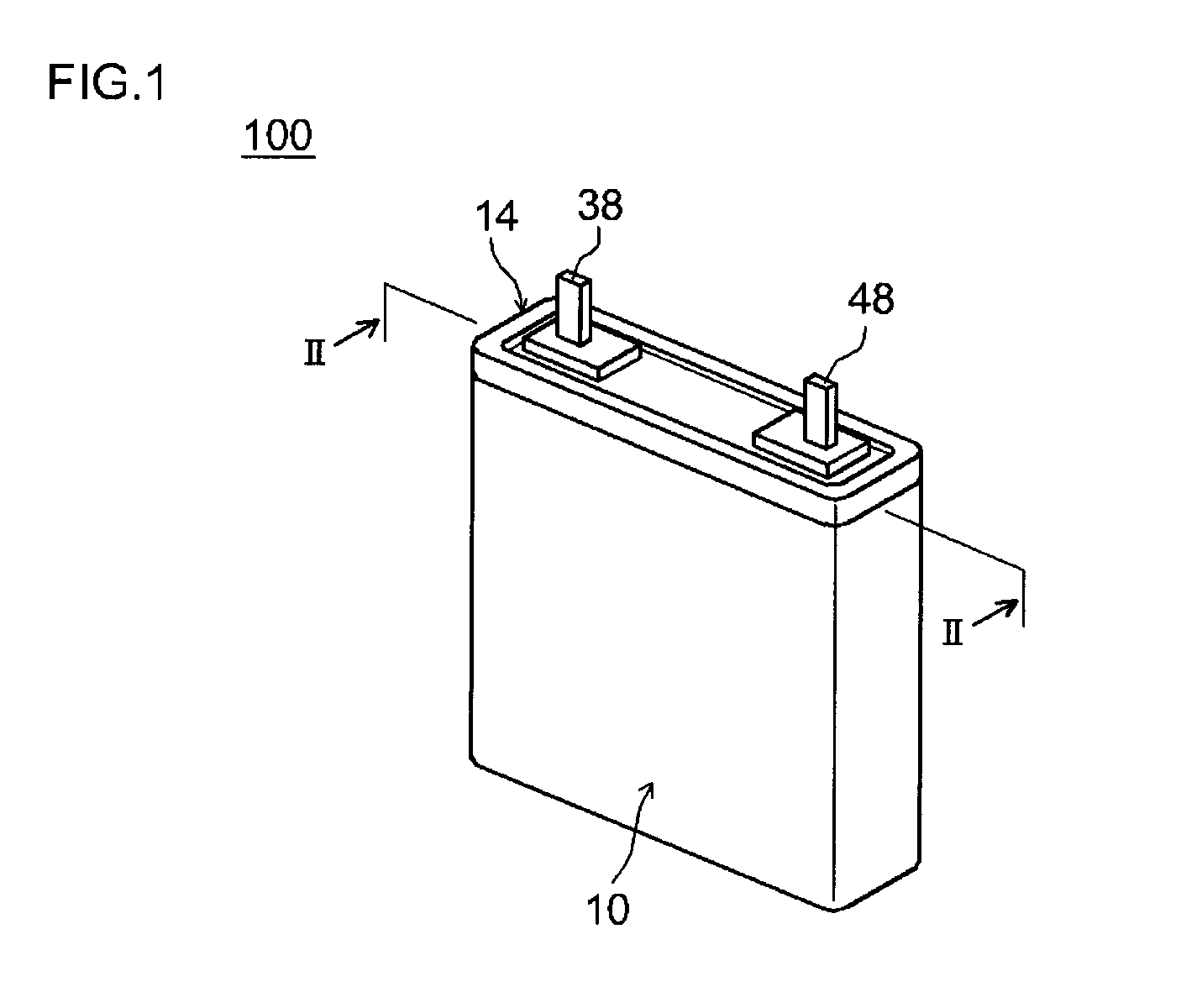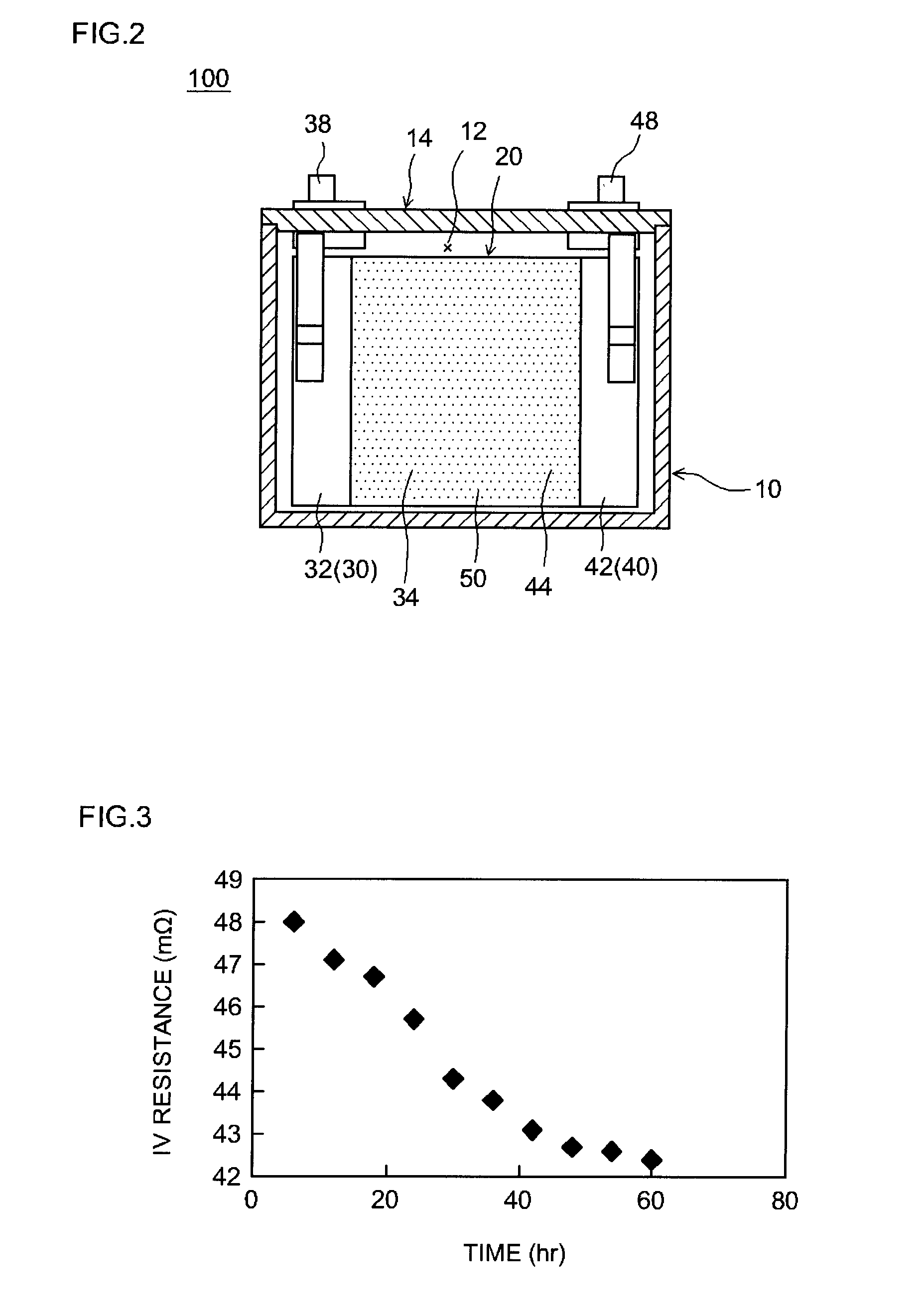Method for producing nonaqueous electrolyte lithium-ion secondary battery
a lithium-ion secondary battery, non-aqueous electrolyte technology, applied in secondary cell servicing/maintenance, non-aqueous electrolyte cells, sustainable manufacturing/processing, etc., can solve the problems of battery deterioration, internal resistance increase, battery deterioration, etc., to prevent further reductive decomposition, prevent the effect of deterioration of the battery
- Summary
- Abstract
- Description
- Claims
- Application Information
AI Technical Summary
Benefits of technology
Problems solved by technology
Method used
Image
Examples
examples 1 and 2
[0066]For the positive electrode mixture a slurry composition was prepared by mixing the powdered positive electrode active material, acetylene black (conductive material), and PVDF (binder) at a mass ratio of 85:10:5 with N-methyl-2-pyrrolidone (NMP) so that the solids concentration (NV) would be about 50%. In this case, powdered lithium-manganese oxide (LiMn2O4) with an average particle size of 7 μm, specific surface area of 1 m2 / g, and a theoretical discharge capacity of 90 mA / g was used as the positive electrode active material.
[0067]The positive electrode mixture was applied to both sides of a continuous sheet aluminum foil 15 μm thick (positive current collector) so that the total amount applied to both sides would be 240 g / m2 (as NV). After drying, this was compressed so that the total thickness would be about 110 μm to obtain the positive electrode sheet.
[0068]For the negative electrode mixture a slurry composition was prepared by mixing natural graphite, SBR, and CMC at a m...
examples 3 and 4
[0075]The respective batteries of Examples 3 and 4 were obtained in the same manner as in Example 1 except additive A was not added to the electrolyte solution.
examples 5 and 6
[0076]The respective batteries of Examples 5 and 6 were obtained in the same manner as in Example 1 except additive B was not added to the electrolyte solution.
PUM
| Property | Measurement | Unit |
|---|---|---|
| Temperature | aaaaa | aaaaa |
| Time | aaaaa | aaaaa |
| Temperature | aaaaa | aaaaa |
Abstract
Description
Claims
Application Information
 Login to View More
Login to View More - R&D
- Intellectual Property
- Life Sciences
- Materials
- Tech Scout
- Unparalleled Data Quality
- Higher Quality Content
- 60% Fewer Hallucinations
Browse by: Latest US Patents, China's latest patents, Technical Efficacy Thesaurus, Application Domain, Technology Topic, Popular Technical Reports.
© 2025 PatSnap. All rights reserved.Legal|Privacy policy|Modern Slavery Act Transparency Statement|Sitemap|About US| Contact US: help@patsnap.com



